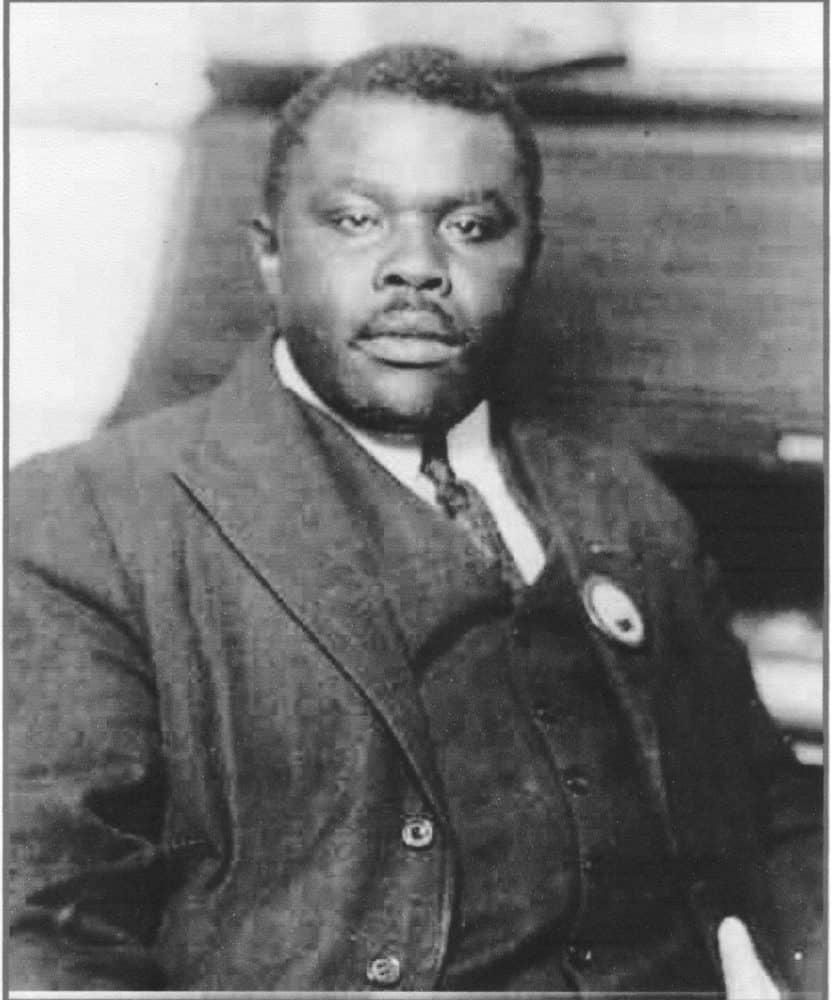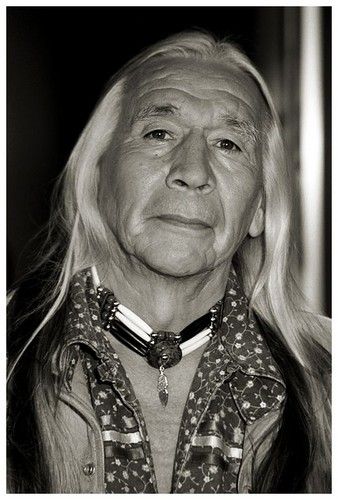Blog
“For to be free is not merely to cast off one’s chains, but to live in a way that respects and enhances the freedom of others.”
Nelson Mandela
more...Tonight a bright full Moon will fade to red. Tonight’s moon will be particularly bright because it is reaching its fully lit phase when it is relatively close to the Earth in its elliptical orbit. In fact, by some measures of size and brightness, tonight’s full Moon is designated a supermoon, although perhaps the “super” is overstated because it will be only a few percent larger and brighter than the average full Moon. However, our Moon will fade to a dim red because it will also undergo a total lunar eclipse — an episode when the Moon becomes completely engulfed in Earth’s shadow. The faint red color results from blue sunlight being more strongly scattered away by the Earth’s atmosphere. A January full moon, like the one visible tonight, is referred to as a Wolf Moon in some cultures. Tonight’s supermoon total eclipse will last over an hour and be best visible from North and South America after sunset. The featured time-lapse video shows the last total lunar eclipse — which occurred in 2018 July. The next total lunar eclipse will occur only in 2021 May.
more...Andy Sheppard (born 20 January 1957) is a British jazz saxophonist and composer. He has been awarded several prizes at the British Jazz Awards, and has worked with some notable figures in contemporary jazz, including Gil Evans, Carla Bley, George Russell and Steve Swallow.
Sheppard was born in Warminster, Wiltshire, England, in 1957. At the age of 19 he emerged as a musician in the Salisbury-based contemporary quartet Sphere in the late 1970s, gigging only three weeks after picking up the saxophone. He honed his skills in the wine bars and jazz clubs of the UK and Europe in the early 1980s. He also played with world music groups and with more established improvisers such as Keith Tippett. While still with Sphere, Sheppard moved to Paris, working with French bands Lumière and Urban Sax.
In the mid-1980s Sheppard returned to the UK, playing often on Ki Longfellow-Stanshall‘s and Vivian Stanshall‘s Bristol, England-based Old Profanity Showboat, and released his self-titled debut solo album, featuring Randy Brecker and Steve Swallow, who also produced the album. The record was well received and led to Sheppard being awarded the Best Newcomer prize at the 1987 British Jazz Awards, followed by the Best Instrumentalist Award in 1988. ’87 also saw Sheppard join George Russell’s Living Time Orchestra and tour with Gil Evans.
more...Wilbur James Cobb (born January 20, 1929) is an American jazz drummer.
Some of Cobb’s most famous work is on Miles Davis‘s Kind of Blue (1959). Cobb is the last surviving player from the session. He also played on other Davis albums, including Sketches of Spain, Someday My Prince Will Come, Miles Davis at Carnegie Hall, In Person Friday and Saturday Nights at the Blackhawk, Complete, and briefly on Porgy and Bess and Sorcerer.
He has worked with Dinah Washington, Pearl Bailey, Clark Terry, Cannonball Adderley, Dizzy Gillespie, John Coltrane, Sarah Vaughan, Billie Holiday, Wynton Kelly, Stan Getz, Wes Montgomery, Art Pepper, Gil Evans, Miles Davis, Paul Chambers, Kenny Burrell, J. J. Johnson, Sonny Stitt, Nat Adderley, Benny Golson, Hank Jones, Ron Carter, George Coleman, Fathead Newman, Geri Allen, Earl Bostic, Leo Parker, Charlie Rouse, Ernie Royal, Philly Joe Jones, Bobby Timmons, Walter Booker, Jerome Richardson, Keter Betts, Jimmy Cleveland, Sam Jones, Red Garland, Joe Henderson, Eddie Gómez, Bill Evans, Jeremy Steig, Richard Wyands, Peter Bernstein, Richie Cole, Nancy Wilson, Ricky Ford, and David Amram.
more...Huddie William Ledbetter /ˈhʌdi/ (January 20, 1888 – December 6, 1949) was an American folk and blues musician notable for his strong vocals, virtuosity on the twelve-string guitar, and the folk standards he introduced. He is best known as Lead Belly. Though many releases credit him as “Leadbelly“, he himself wrote it as “Lead Belly”, which is also the spelling on his tombstone and the spelling used by the Lead Belly Foundation.
Lead Belly usually played a twelve-string guitar, but he also played the piano, mandolin, harmonica, violin, and “windjammer” (diatonic accordion). In some of his recordings, he sang while clapping his hands or stomping his foot.
Lead Belly’s songs covered a wide range of genres and topics including gospel music; blues about women, liquor, prison life, and racism; and folk songs about cowboys, prison, work, sailors, cattle herding, and dancing. He also wrote songs about people in the news, such as Franklin D. Roosevelt, Adolf Hitler, Jean Harlow, Jack Johnson, the Scottsboro Boys and Howard Hughes. Lead Belly was inducted into the Rock and Roll Hall of Fame in 1988 and the Louisiana Music Hall of Fame in 2008.
Lead Belly was born Huddie William Ledbetter to Sally and Wesley Ledbetter on a plantation near Mooringsport, Louisiana, on January 20, 1888. The 1900 United States Census lists “Hudy Ledbetter” as 12 years old, born January 1888, and the 1910 and 1930 censuses also give his age as corresponding to a birth in 1888. The 1940 census lists his age as 51, with information supplied by wife Martha. However, in April 1942, when Ledbetter filled out his World War II draft registration, he gave his birth date as January 23, 1889, and his birthplace as Freeport, Louisiana(“Shreveport”). His grave marker bears the date given on his draft registration.
more...Galician
https://www.youtube.com/watch?v=ezudAvNqM1E&list=RDEMK4ZRS0eLdKCbMDAe-Ru3oA&index=24
more...“We are going to emancipate ourselves from mental slavery because whilst others might free the body, none but ourselves can free the mind. Mind is your only ruler, sovereign. The man who is not able to develop and use his mind is bound to be the slave of the other man who uses his mind.”
more...
NGC 6052 is a pair of galaxies in the constellation of Hercules. It was discovered on 11 June 1784 by William Herschel. It was described as “faint, pretty large, irregularly round” by John Louis Emil Dreyer, the compiler of the New General Catalogue.
The two components of NGC 6052 are designated NGC 6052A and NGC 6052B, respectively. The two, attracted by each other’s gravity, have collided and are interacting with each other. NGC 6052 is currently in a late stage of merging, where the shape of the two galaxies is not distinctly defined.
SN 1982aa, a powerful radio supernova, was detected in NGC 6052.
more...Robert Allen Palmer (19 January 1949 – 26 September 2003) was an English singer-songwriter, musician, and record producer. He was known for his distinctive, soulful voice, mix of musical styles on his albums, combining soul, jazz, rock, pop, reggae, blues, and sartorial elegance. He found success both in his solo career and with the Power Station, and had Top 10songs in both the UK and the US.
His famous music videos, directed by British fashion photographer Terence Donovan, for the hits “Addicted to Love“, “Simply Irresistible” and “I Didn’t Mean to Turn You On” featured women simulating playing instruments, almost identically dressed with pale faces, dark-eye makeup and bright-red lipstick. Palmer’s involvement in the music industry began in the 1960s, covered four decades and included a spell with Vinegar Joe.Palmer received a number of awards throughout his career, including two Grammy Awards for Best Male Rock Vocal Performance, an MTV Video Music Award, and two Brit Award nominations for Best British Male Solo Artist.
Palmer died aged 54 following a heart attack on 26 September 2003.
Palmer’s father was a British naval intelligence officer stationed in Malta. Palmer moved with his family from Batley (where he was born) to Scarborough, North Yorkshire in 1949. Influenced as a child by blues, soul and jazz music on American Forces Radio, Robert Palmer joined his first band, The Mandrakes, at the age of 15 whilst still at Scarborough High School for Boys. His first major break came with the departure of singer Jess Roden from the band The Alan Bown Set in 1969, after which Palmer was invited to London to sing on their single “Gypsy Girl”.
more...Janis Lyn Joplin (January 19, 1943 – October 4, 1970), nicknamed ‘Pearl,’ was an American rock, soul, and blues singer and songwriter, and one of the most successful and widely known female rock stars of her era After releasing three albums, she died of a heroin overdose at the age of 27. A fourth album, Pearl, was released in January 1971, just over three months after her death. It reached number one on the Billboard charts.
In 1967, Joplin rose to fame following an appearance at Monterey Pop Festival, where she was the lead singer of the then little-known San Francisco psychedelic rock band Big Brother and the Holding Company. After releasing two albums with the band, she left Big Brother to continue as a solo artist with her own backing groups, first the Kozmic Blues Band and then the Full Tilt Boogie Band. She appeared at the Woodstock festival and the Festival Express train tour. Five singles by Joplin reached the Billboard Hot 100, including a cover of the Kris Kristofferson song “Me and Bobby McGee“, which reached number 1 in March 1971.Her most popular songs include her cover versions of “Piece of My Heart“, “Cry Baby“, “Down on Me“, “Ball and Chain“, and “Summertime“; and her original song “Mercedes Benz“, her final recording.
Joplin, a mezzo-soprano highly respected for her charismatic performing ability, was posthumously inducted into the Rock and Roll Hall of Fame in 1995. Audiences and critics alike referred to her stage presence as “electric”. Rolling Stone ranked Joplin number 46 on its 2004 list of the 100 Greatest Artists of All Time and number 28 on its 2008 list of 100 Greatest Singers of All Time. She remains one of the top-selling musicians in the United States, with Recording Industry Association of America certifications of 15.5 million albums sold.
Janis Lyn Joplin was born in Port Arthur, Texas, on January 19, 1943, to Dorothy Bonita East (1913–1998), a registrar at a business college, and her husband, Seth Ward Joplin (1910–1987), an engineer at Texaco. She had two younger siblings, Michael and Laura. The family belonged to the Churches of Christ denomination.
more...Horace Parlan (January 19, 1931, Pittsburgh, Pennsylvania – February 23, 2017, Korsør, Denmark) was an American hard bop and post-bop pianist and composer. He was known for his contributions to the Charles Mingus recordings Mingus Ah Um and Blues & Roots.
In his birth year, Parlan was stricken with polio, resulting in the partial crippling of his right hand. The handicap contributed to his development of a particularly “pungent” left-hand chord voicing style, while comping with highly rhythmic phrases with the right.
Between 1952 and 1957, he worked in Washington DC with Sonny Stitt, then spent two years with Mingus’ Jazz Workshop. In 1973, Parlan moved to Copenhagen, Denmark. He later settled in the small village of Rude in southern Zealand. In 1974 he completed a State Department tour of Africa with Hal Singer.
more...Welsh musician Catrin Finch plays the Welsh harp and contributes the Celtic and western classical traditions. Senegalese kora player contributes the musical influences of West Africa and his world music collaborations.
more...Performing for Mt Zion Shabbat for the Soul service 7pm
more...“There is an ancient Indian saying~ Something lives only as long as the last person who remembers it. My people have come to trust memory over history. Memory, like fire, is radiant & immutable while history serves only those who seek to control it, those who douse the flame of memory in order to put out the dangerous fire of truth. Beware these men for they are dangerous & unwise. Their false history is written in the blood of those who might remember & seek the truth.” – Floyd ‘Red Crow’ Westerman
more...Cepheid variable stars are a special type of pulsing star whose cycles of intensity and dimness indicate their inherent brightness. When astronomers find Cepheid variable stars in galaxies, they compare how bright they truly are with how faint they appear over distance, and thus determine the distance to those galaxies. It’s something like judging the distance to a car on a dark road by gauging the brightness of its headlights.
Before Hubble, astronomers had only been able to narrow the universe’s age down to 10-20 billion years old – not a particularly exact measurement with 10 billion years of leeway.
Hubble performed the definitive study of 31 Cepheid variable stars, helping to determine the current expansion rate and thereby narrow the age of the universe down to the most accurate it’s ever been. Its observations of Cepheid variable stars in galaxies like NGC 4603, combined with measurements by other observatories, eventually pinned the age down to 13.7 billion years old, plus or minus a few hundred million years. Hubble’s observations helped change the age of the universe from a vast range of possibilities to the kind of number whose precision required a decimal point.
more...Robert Broom Jr. (born January 18, 1961) is an American jazz guitarist, composer, and educator. He was born and raised in New York City, then moved to Chicago, which has been his home town since 1984. He performs and records with The Bobby Broom Trio and his organ group, The Bobby Broom Organi-Sation. While versed in the traditional jazz (bebop and post-bop) idioms, Broom draws from a variety of American music forms, such as funk, soul, R&B, and blues.
Broom was born in Harlem (1961) and raised on New York City’s Upper West Side (1970s). Broom began studying the guitar at age 12, taking lessons first in folk music. A year later, he began studies with jazz guitarist Jimmy Carter in Harlem, where he took weekly lessons for the next two years. He attended the High School of Music and Art (Laguardia High School of Performing Arts), where he played in the jazz ensemble and received an award for Outstanding Jazz Improvisation during his senior year. Broom began his career while still in high school, performing at New York clubs with Charlie Parker pianists, Al Haig, and Walter Bishop, Jr.. In 1977 he played at Carnegie Hall in a concert with Sonny Rollins and Donald Byrd.
more...Steve Grossman (born January 18, 1951 in New York City) is an American jazz fusion and hard bop saxophonist.
Grossman was Wayne Shorter‘s replacement in Miles Davis‘ jazz-fusion band. Then, from 1971 to 1973, he was in Elvin Jones‘s band.
In the late 1970s, he was part of the Stone Alliance trio with Don Alias and Gene Perla. The group released four albums during this period, including one featuring Brazilian trumpeter Márcio Montarroyos. The albums also feature an array of other musicians. They went on to release three live reunion albums during the 2000s
more...More Posts
- American Beauty
- Inspirational
- Happy Spring 2025
- Mount Zion Hiddur Mitzvah Shabbat
- Cosmo Leo Triplet
- Solomon Burke
- Bismillah Khan
- Modest Mussorgsky
- Otis Spann
- Son House
- Flamenco Fridays Camarón y Tomatito
- Daily Roots Michael Rose
- Regret
- Happy Vernal Equinox 2025
- Cosmo N11
- Carl Palmer
- Lee “Scratch” Perry
- Harold Mabern
- Marian McPartland
- Sister Rosetta Tharpe





